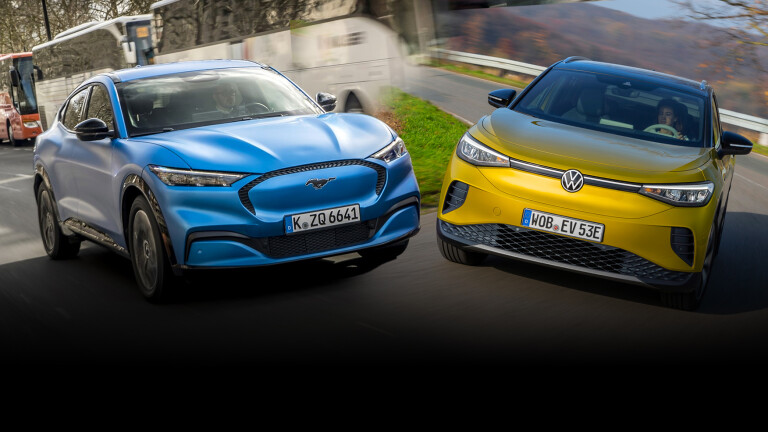
Traditional carmakers are paying strong attention to electric vehicles, and both Ford and Volkswagen are expanding availability globally.
However, electric vehicle (EV) take-up continues to be slowed by market preferences and minimal incentives in Australia, pushing supply towards more EV-friendly regions.
An example of this is the Ford Mustang Mach-E, which is bound for New Zealand – but remains unconfirmed for Australia.
However, Wheels understands the electric SUV will eventually arrive in Australia, once global demand softens.


In announcing the exit of the popular Focus ST and Fiesta ST models in early August, Ford Australia boss Andrew Birkic said the company would continue focusing on SUVs, commercial vehicles and electrification.
Meanwhile, Volkswagen plans to launch its first ID-branded vehicles in Australia – headlined by the ID.4 medium SUV – in the second half of 2023.
While the ID.4 is pitched as a practical and value-orientated offering to compete against the popular Tesla Model Y, the Mustang Mach-E focuses on its performance and design traits.
So, how do the conceptually-similar Volkswagen ID.4 and Ford Mustang Mach-E compare on paper? Let’s find out.
JUMP AHEAD
Firstly, are you interested in a medium-to-large electric SUV available now?
Check out our coverage below.

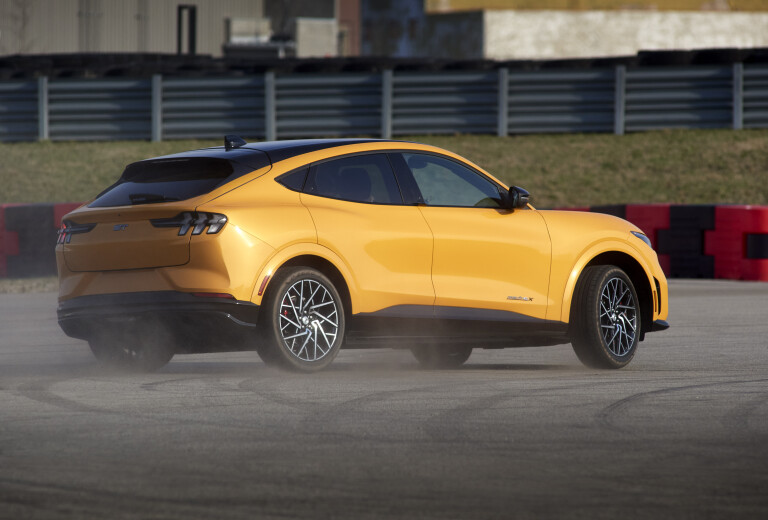
Pricing
Last week, Volkswagen managing director for passenger vehicles, Michal Szaniecki, said the ID.4 and its swoopy ID.5 coupe sibling would be priced in line with the Tiguan R-Line and the Tiguan R.
Exact spec hasn't been locked in, but expect the first batch to match the Pro Performance trim offered in Europe, with a 77kWh battery and a driving range of around 520 kilometres.
The flagship GTX will arrive later, with first deliveries expected in early 2023.
As such, we'd estimate a price between $60,000 for the entry ID.5 and $80,000 for the GTX – similar to the R-Line and R, respectively.
As for the Mustang Mach-E, it is a whibit harder to estimate, but our calculations – based on UK and US pricing – suggest a price between $85,000 and $110,000.
All estimated prices exclude on-road costs (taxes, registration, third-party insurance and dealer delivery charges) and EV incentives, which are subject to change.
| Volkswagen ID.4 | Ford Mustang Mach-E |
|---|---|
| RWD: $65,000 (est.) | RWD: $85,000 (est.) |
| AWD: $68,500 (est.) | AWD: $90,000 (est.) |
| GTX: $80,000 (est.) | GT: $110,000 (est.) |

Performance
As the table below shows, the Ford Mustang Mach-E is the most powerful, with the flagship GT grade packing a serious punch.
However, the Volkswagen ID.4 still has respectable outputs, and the GTX is pitched as an electric alternative to the traditional Golf GTI.
| Volkswagen ID.4 | Ford Mustang Mach-E | |
|---|---|---|
| Power | RWD: 150kW | RWD: 216kW |
| AWD: 195kW | AWD: 258kW | |
| GTX: 220kW | GT: 358kW | |
| Torque | RWD: 310Nm | RWD: 580Nm |
| AWD: 425Nm | AWD: 580Nm | |
| GTX: 460Nm | GT: 860Nm | |
| 0-100 km/h | RWD: 8.5s | RWD: 5.1s |
| AWD: 6.9s | AWD: 5.1s | |
| GTX: 6.2s | GT: 3.7s | |
| Top speed | RWD: 159km/h | RWD: 179km/h |
| AWD: 159km/h | AWD: 179km/h | |
| GTX: 180km/h | GT: 200km/h |
Driving range
For claimed driving range, both vehicles are closely matched, although the entry-level Mach-E has a WLTP-rated 599-kilometre range. This is largely due to the Ford's larger 98.7kWh (91kWh usable) high-voltage battery pack.
| Volkswagen ID.4 | Ford Mustang Mach-E | |
|---|---|---|
| Range | RWD: 535 km | RWD: 599 km |
| AWD: 515 km | AWD: 549 km | |
| GTX: 500 km | GT: 489 km | |
| Battery size | 82kWh (77kWh usable) | 98.7kWh (91kWh usable) |
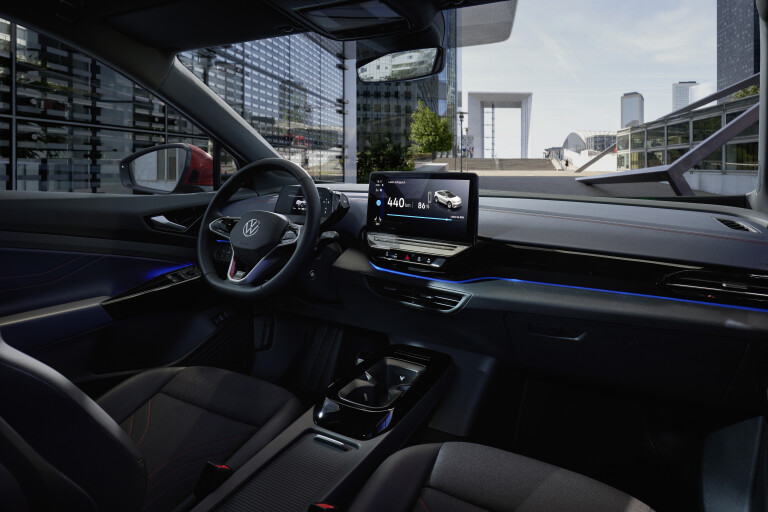

Dimensions
Here, the Ford Mustang Mach-E is shown to be a more spacious offering, with a large-sized footprint similar to the Kia EV6, compared to the smaller Volkswagen ID.4, which is likely to slot into the medium SUV category in Australia.
| Volkswagen ID.4 | Ford Mustang Mach-E | |
|---|---|---|
| Wheelbase | 2765mm | 2984mm |
| Length | 4584mm | 4713mm (GT: 4743mm) |
| Height | 1636mm | 1624mm (GT: 1613mm) |
| Width | 1852mm | 1881mm |
Charging
Using a public DC charger should top up the battery of each vehicle from 10 to 80 per cent in around 40 minutes.
This is due to a charging rate above 100kW in both vehicles, allowing for a quicker charge than a standard 50kW unit.
Unlike the Kia EV6 and Hyundai Ioniq 5, neither offers compatibility with 350kW ultra-rapid chargers.
For charging at home, both have a maximum 11kW AC charge rate.
| Volkswagen ID.4 GTX | Ford Mustang Mach-E GT | |
|---|---|---|
| DC fast charger | 50kW: approx. 70 minutes (10% – 80%) | 50kW: approx. 85 minutes (10% – 80%) |
| 135kW: approx. 33 minutes (10% – 80%) | 150kW: approx. 43 minutes (10% – 80%) | |
| AC standard charger | Max. capacity: 11kW | Max. capacity: 11kW |
| Approx. 5 hr 45 min. (11kW, 10% – 80%) | Approx. 6 hr 45 min. (11kW, 10% – 80%) |
Features
VOLKSWAGEN ID.4
| 18-, 19- or 20-inch alloy wheels |
| 12-inch Discover Max infotainment system |
| Apple CarPlay and Android Auto (wireless) |
| DAB+ digital radio |
| Voice assistant with 'ID.Light' |
| 5.3-inch digital instrument cluster |
| LED headlights and tail-lights |
| Augmented reality head-up display |
| Wireless phone charger |
| USB-C ports |
| Adaptive suspension (GTX) |
| Heat pump |
| Vehicle-to-X (V2X) compatibility |
| 30-colour adjustable ambient lighting |
| Panoramic sunroof |
| Massaging seats. |
FORD MUSTANG MACH-E
| 18-, 19- or 20-inch alloy wheels |
| 15.5-inch Sync 4 infotainment system |
| Apple CarPlay and Android Auto (wireless) |
| DAB+ digital radio |
| Amazon Alexa voice assistant |
| 10.2-inch digital instrument cluster |
| 10-speaker B&O audio system |
| Wireless phone charger |
| USB-C ports |
| Adaptive suspension (GT) |
| Brembo brakes (GT) |
| Ambient lighting |
| Electronic door latches |
| LED headlights and tail-lights. |
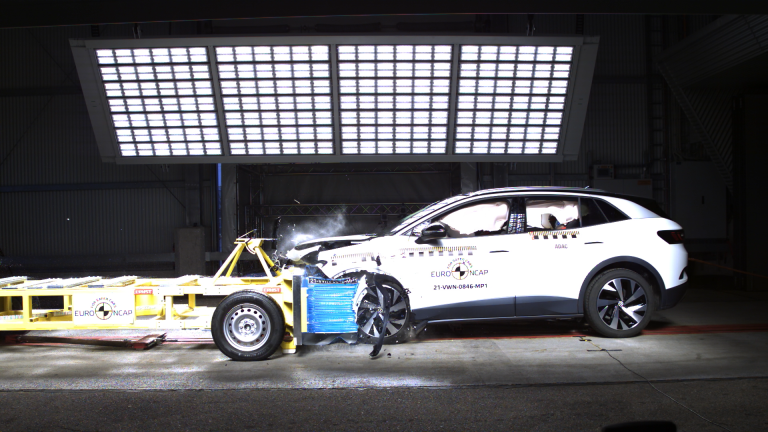
Safety
Both the ID.4 and Mustang Mach-E are covered by five-star Euro NCAP ratings, based on testing conducted in 2021.
These safety results would likely carry across to ANCAP.
Key safety equipment includes; autonomous emergency braking, lane-keep assist, adaptive cruise control (with Ford's BlueCruise semi-autonomous system on the Mach-E), traffic sign recognition and a 360-degree camera.
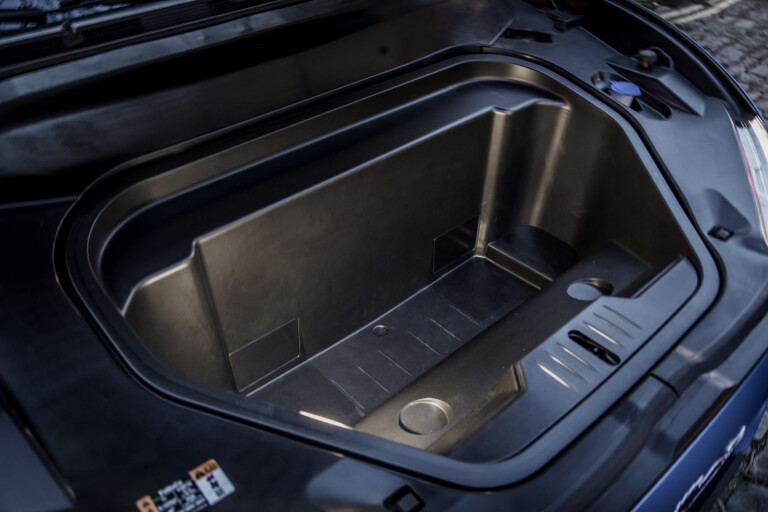
Cargo space
While there is a size difference between the ID.4 and Mustang Mach-E, it is the Volkswagen that has a larger boot – largely due to the latter's coupe-like roofline.
However, the Ford offers a 100-litre front boot, cutting the gap to around 41L. There is no need to pack an esky, as it can be filled with ice, with a drain plug to remove water.
| Volkswagen ID.4 | Ford Mustang Mach-E | |
|---|---|---|
| Boot capacity | 543L | 402L |
| Front boot (frunk) capacity | N/A | 100L |
| Electric tailgate | Yes, hands-free | Yes, hands-free |
| Remote-folding second-row seats | N/A | N/A |



COMMENTS